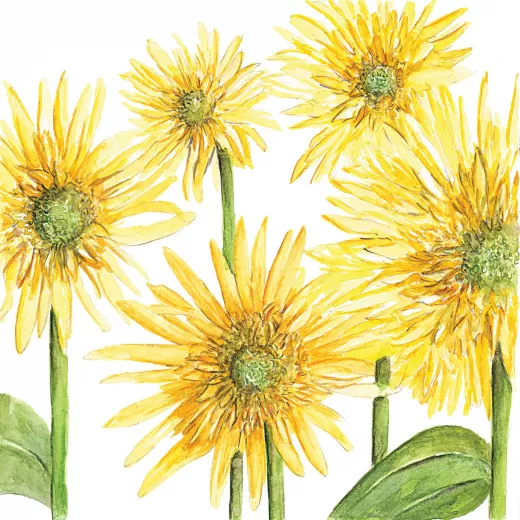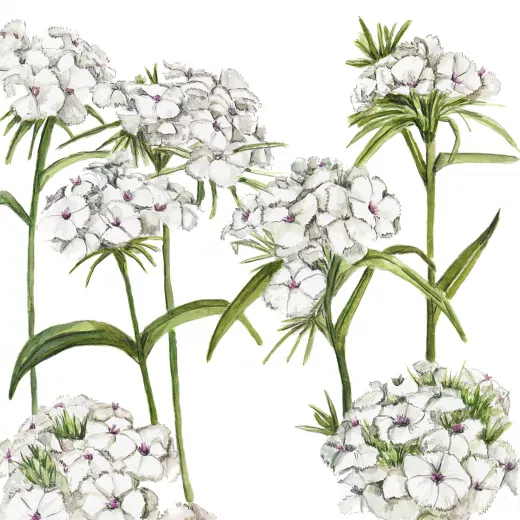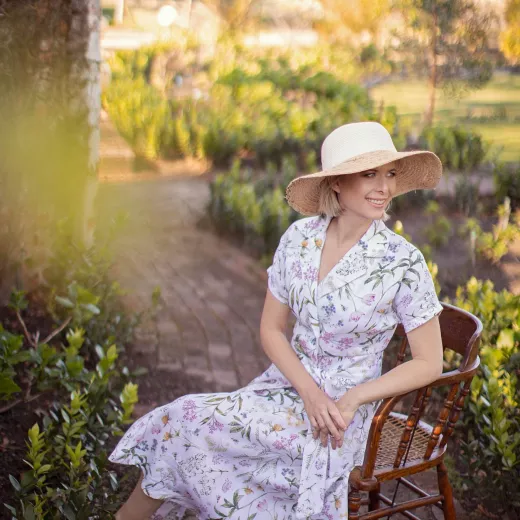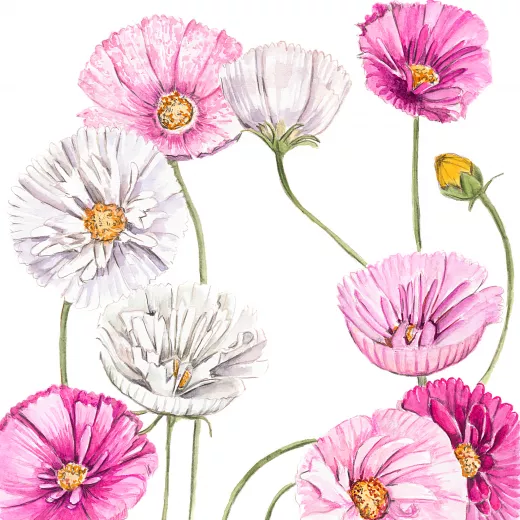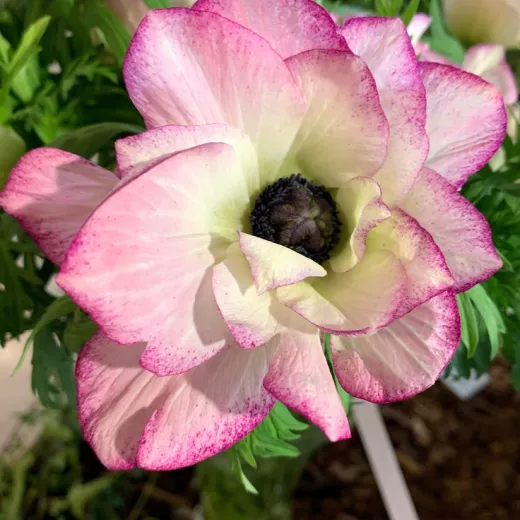Quick Facts
| Flower Type | Hibiscus |
|---|---|
| Flower Colour | Light Purple |
| Planting Time | It’s always best to plant plants in Spring or Autumn. |
| Watering | Hibiscus need to be watered often when the weather is warm, and even more when it is hot. In most locations, that means daily watering, unless sufficient rain makes watering unnecessary on a particular day. |
| Life Cycle | Perennial |
Hibiscus Lavender Chiffon: 14cm Plant
Welcome to our botanical haven, where the exquisite beauty of nature meets the delicate charm of Hibiscus pedunculatus. This small and graceful shrubby perennial, reaching a modest height of 1 to 2 meters, is a testament to nature's artistry. The lower woody section of the shrub forms a sturdy foundation, giving rise to slender stems adorned with short, star-shaped hairs. As you explore its intricate details, you'll notice the rough leaves, adorned with a tapestry of texture, and covered in these delightful hairs.
The leaves themselves are a canvas of botanical expression, predominantly 3-lobed but occasionally unfolding into a symphony of 5-lobed patterns. Their margins, adorned with delicate teeth, add a touch of refinement to this already elegant perennial. In every aspect, from its slender stems to its toothed leaves, Hibiscus pedunculatus stands as a testament to the beauty that thrives in simplicity. Join us in celebrating the allure of this dainty shrub and let the enchantment of nature unfold in your garden sanctuary.
Coordination of Logistics for PayFast Orders:
For your convenience, we invite you to stay in direct contact with Marisa through WhatsApp. This will allow you to receive real-time updates on the status of your order and address any specific concerns you may have. You can reach her on the following number: 074 228 2444.
Thank you for choosing Adene Flowers. We look forward to fulfilling your order with the utmost care and attention.
| Flower Type |
Hibiscus
|
|---|---|
| Flower Colour |
Light Purple
|
| Flower Size |
10cm
|
| Plant Height |
1 meter – 2 meters
|
| Light Preferences |
Full Sun but will tolerate Light Shade.
|
| Plant Spacing |
1 meter – 1.2 meters
|
| Life Cycle |
Perennial
|
| Flowering Time |
The flowering time is often all year round, but mainly from October to May.
|
| Pinch |
Hardy hibiscuses don't require pruning, but pinching the plants back in early summer will produce more compact, bushier growth.
|
| Planting Time |
It’s always best to plant plants in Spring or Autumn.
|
| Watering |
Hibiscus need to be watered often when the weather is warm, and even more when it is hot. In most locations, that means daily watering, unless sufficient rain makes watering unnecessary on a particular day.
|
| Fertilizing |
Refer to Top Tips Field for more Information
|
| Top Tips |
Fertilizing:
Hibiscus plants in containers should be fertilized a little more frequently than ones planted in garden beds— about once a week during the blooming period should suffice. Garden hibiscus should be fertilized about once every two weeks. Neither require any fertilizer during the winter months. Growing a hibiscus plant can be a rewarding experience, as these colorful and vibrant flowers are known for their beauty. Here are some top tips for growing a healthy and thriving hibiscus plant: Sunlight: Hibiscus plants love sunlight. Ensure they receive at least 6-8 hours of direct sunlight each day. If you're growing them indoors, place them near a south or west-facing window. Soil: Use well-draining soil with a slightly acidic to neutral pH (around 6.0 to 6.5). Adding organic matter like compost can improve soil structure and fertility. Watering: Keep the soil consistently moist but not waterlogged. Water when the top inch of soil feels dry. Avoid letting the soil dry out completely, as hibiscus plants prefer slightly damp conditions. Fertilizing: Use a balanced, water-soluble fertilizer with a ratio like 10-10-10 during the growing season (spring and summer). Reduce fertilizer in the fall and winter when the plant is dormant. Pruning: Regular pruning helps maintain a bushy and compact shape. Prune in late winter or early spring to encourage new growth. Pests and Diseases: Keep an eye out for pests like aphids, scale, and spider mites. Treat promptly if you notice any infestations. Hibiscus plants can be susceptible to fungal diseases; ensure good air circulation and avoid overwatering. Container Growing: If growing hibiscus in a container, choose a large pot with good drainage. Repot every 2-3 years or when the plant outgrows its current container. Winter Care: In colder climates, bring potted hibiscus indoors before the first frost. Mulch the base of outdoor hibiscus to protect the roots during winter. |

